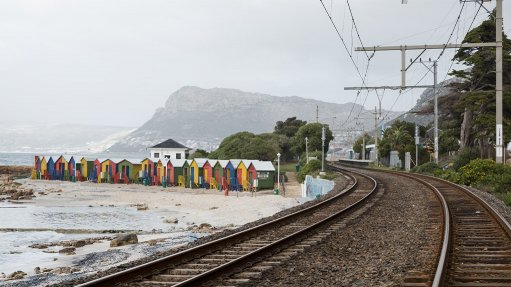
SAFETY FIRST improved maintenance systems are crucial in addressing the current safety challenges within rail sector
Owing to various safety-related challenges that the South African rail industry has faced in the past year, the Railway Safety Regulator (RSR) plans to increase its safety awareness activities to mitigate the risk of operational occurrences.
According to the ‘State of Safety’ report 2018/19, a total of 3 990 operational occurrences have been recorded, including derailments, collisions, level-crossing accidents and people who were struck by moving trains.
RSR acting CEO Tshepo Kgare tells Engineering News that these occurrences were the result of a combination of factors, including the declining state of the rail infrastructure, and human factors.
“Rail safety is important to us. We need safe, reliable trains and to realise this, we need, for example, improved signalling systems, besides other tangible improvements. Signalling contributes towards improved rail safety by mitigating the risk of collision and offers a host of additional benefits such as improved scheduling and improved efficiency.”
Kgare points out that trains operate on fixed rails and, coupled with their slow braking times, as a result of their sheer size and weight, they are susceptible to collisions.
Also, improved maintenance systems are crucial in addressing the current safety challenges.
However, Kgare believes that combining the experience gained throughout decades of modernising and maintaining signalling systems – owing to digitalisation and data analytics – will enable the rail industry to
create a comprehensive suite of services tailored to address the challenges of railway infrastructure owners and operators.
Moreover, to align itself with global trends, the RSR is developing a suite of tools required to predict risk and improve the management of railway safety by means of a safety risk model, the railway management maturity model, Safety Permit Assessment Protocol, Safety Method for Risk Assessments and the Common Safety Method for Supervision.
“Once in place, these tools are expected to strengthen the regulatory regime and, therefore, have a significant impact on how railway safety is managed. This is expected to drive the reduction of operational occurrences,” Kgare highlights.
Further, she mentions that the management and board of the RSR have changed their focus with the revision of its vision from zero occurrences to safe, reliable and sustainable railway operations that are recognised globally.
“This not only speaks to a renewed emphasis on safety but is also a commitment to be the best, exert influence and provide direction in all spheres of railway safety.”
The drive to be counted among the best is a step-change and evidence that the management and board of the RSR are setting the bar very high for rail safety.
Strides have been made to ensure that the RSR’s organisational structure is fit for purpose and that the right people with the right skills are in place to offer value to the operators.
Meanwhile, Kgare says government’s 2020-2025 Medium Term Strategic Framework states that the Department of Transport will put its support behind the Railway Safety Bill, which has undergone public comment and is currently with the Portfolio Committee on Transport for further processing.
“Once the Bill has been passed in the National Assembly and the National Council of Provinces, it will be signed into law by the President.”
Kgare says the new Bill will provide for the regulation of railway safety in South Africa, empower the RSR to enforce railway safety requirements and address regulatory and capacity gaps.